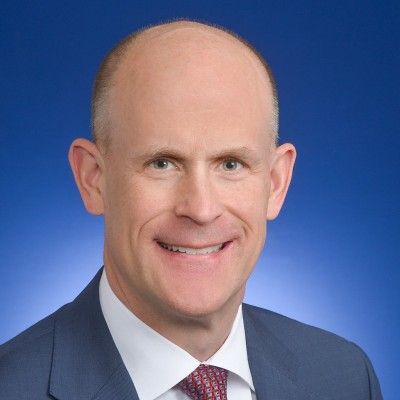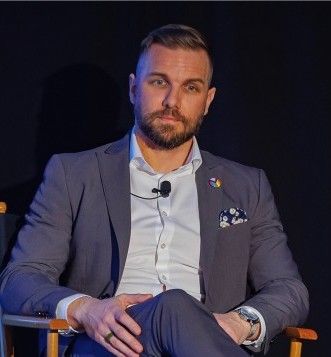- Center on Health Equity & Access
- Clinical
- Health Care Cost
- Health Care Delivery
- Insurance
- Policy
- Technology
- Value-Based Care
Driving Innovation in Cancer Care, Redefining Value, and Improving Patient Access
Panelists discussed how the Inflation Reduction Act and the Enhancing Oncology Model are impacting value in cancer care and access to treatment.
With the Inflation Reduction Act (IRA) now being implemented and the Enhancing Oncology Model (EOM) enacting changes and opening up for a second round of applications to join, a panel of experts at the Patient-Centered Oncology Care® meeting discussed what is improving access, impacting innovation, and creating value in cancer care.
Ryan Haumschild, PharmD, MS, MBA, CPEL, vice president of pharmacy, Emory Healthcare and Winship Cancer Institute, moderated the discussion and was joined by:
- Zahra Mahmoudjafari, PharmD, MBA, BCOP, FHOPA, clinical pharmacy manager, Division of Hematologic Malignancies and Cellular Therapeutics, University of Kansas Cancer Center
- Bruce Wilson, vice president, US Oncology Care & Access, AstraZeneca
- Derek Asay, senior vice president of government strategy and federal accounts, Lilly USA
- Samuel Stolpe, PharmD, MPH, head of health care quality strategy, Johnson & Johnson Innovative Medicine
Derek Asay
Image Credit: Lilly USA

The discussion kicked off with the hottest topic: how the IRA will affect timelines for new therapies. Asay asserted that the law cuts the value of small molecules in half since they only get 9 years of exclusivity before negotiations, or what he called “price setting,” takes effect. In comparison, biologics get 13 years. Although a few drugs that underwent Medicare fair price (MFP) negotiation got new indications after being selected for the list, he doesn’t see that happening going forward.
“I think what we'll see is you're really trying to truncate that timeline, of really putting those indications close together,” he explained. That could be good for patients, but it does provide risk. It will now be harder to start a drug in third-line treatment, de-risk it, and then move it up into earlier lines of therapy over time.
Bruce Wilson
Image Credit: AstraZeneca

Wilson added that companies are being put into the position of deciding whether they should launch an asset with a smaller indication or hold it for a bigger indication. Manufacturers will be looking at net present value opportunities to see if that initial indication is worth launching.
“Now, instead of launching in a small population [and] helping those patients until that bigger indication comes, now I have to hold [the drug] for the larger indication, and then I launch both indications simultaneously,” Wilson said. “Meanwhile, that smaller population just loses out.”
Zahra Mahmoudjafari, PharmD, MBA, BCOP, FHOPA
Image Credit: University of Kansas Cancer Center

Mahmoudjafari agreed that this is likely to adversely affect patient outcomes in the short term if an indication doesn’t exist for the smaller population, but that it also affects the clinicians who have to do a lot of administrative work now for that population.
Asay said that while the MFP has gotten the spotlight for the IRA, the bigger change is the benefit design, which takes effect on January 1. This design change gets rid of the donut hole, caps out-of-pocket costs at $2000, and introduces a “smoothing” that spreads out the out-of-pocket costs so they don’t all hit in January.
“For oncology, that's going to be huge, I think,” he said. “[It’s] really a game changer for patients and affordability.”
One unknown is how the drugs with negotiated prices will appear on formularies. Although the IRA mandates that the negotiated drugs are on formulary, it doesn’t specify they have to be in a preferred position, which means plans will likely use them for negotiation against other drugs in the class, Asay noted.
Formulary management is important in oncology, because providers sometimes want to try the newest, coolest treatment as early as possible, even if it’s not aligned with the formulary or the best option for the patient, Mahmoudjafari said.
Sam Stolpe, PharmD
Image Credit: Johnson & Johnson

The IRA also intersects with the EOM for oncology providers, because when patients enter the catastrophic phase, Medicare’s share of total costs of care will shift from 80% to 20% starting January 1, 2025. This will ultimately pull down the average cost for Part D drugs, which will have a large impact on certain cancer subtypes, said Stolpe. However, infused agents will remain the same, which he says will exacerbate disparities associated with the cost of infused agents.
“So, the concern I have about this is that this is wholly disconnected with clinical reality, and we already have a lot of problems associated with the EOM,” Stolpe said.
Wilson added that while the Oncology Care Model, the EOM’s predecessor, was somewhat innovative, the EOM has simply done a nice job of figuring out how to make oncologists do more while paying them less. He believes the model is trying to accomplish the right things by reducing care disparities, but the approach needs to be adjusted.
However, Stolpe is optimistic, because he feels like there have been good ideas about how to fix the EOM, including comments from CMS that make him hopeful. There has been talk about redefining what is considered value, especially in oncology. Under the Affordable Care Act, value has been defined as keeping cost constant while quality goes up or driving costs down while quality stays constant.
“But you can easily imagine a scenario—and cancer care is certainly one of them that needs it—where high-cost, high-value therapies are delivering a tremendous amount of value,” he said.
In addition, patient access remains a challenge, because shortages keep occurring. According to Wilson, “the US has done a really good job of driving costs out of the generic market,” but it’s meant that generic makers may only have 1 or 2 facilities making very important therapies, and that carries risk. If just 1 manufacturer has an issue, that’s all it takes to create a shortage.
“I cannot stress, the ramifications of a drug shortage when you are having to have really difficult, ethical conversations with your multidisciplinary care team as to who gets treatment, who does not,” Mahmoudjafari said. “And then the conversations you have to have with parents who have…children with curable diseases.”
Trends in Hospital Pricing for Vulnerable Emergency Department Users, 2021-2023
December 4th 2025Self-pay emergency department prices rose significantly from 2021 to 2023, especially at for-profit and system-affiliated hospitals, highlighting growing affordability challenges for uninsured and underinsured patients.
Read More
